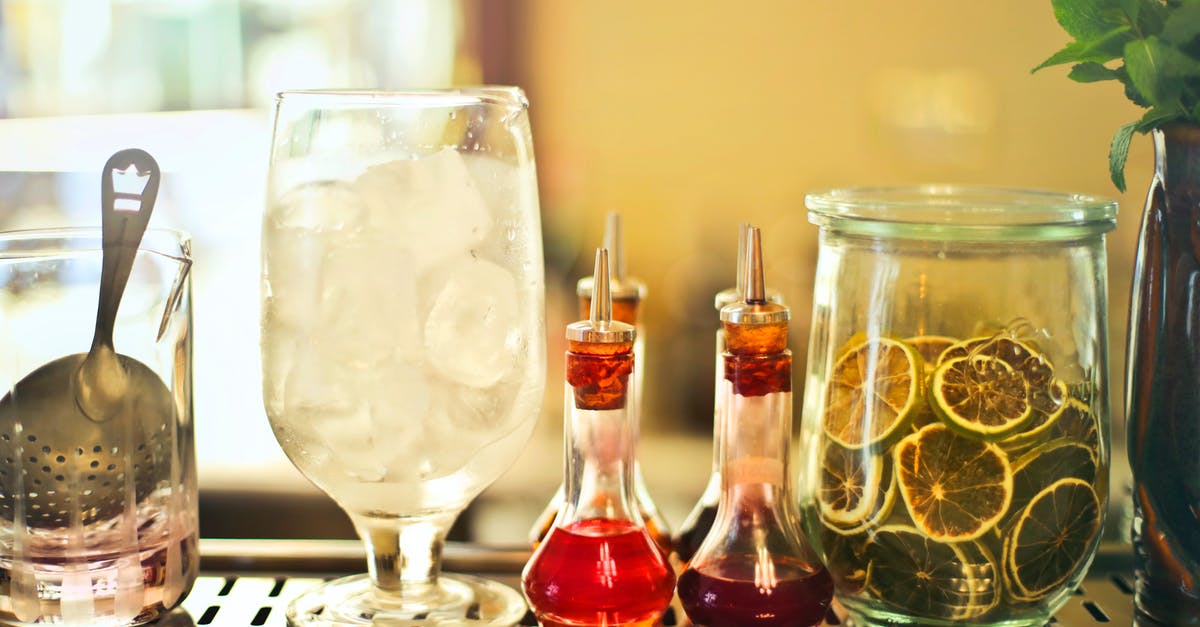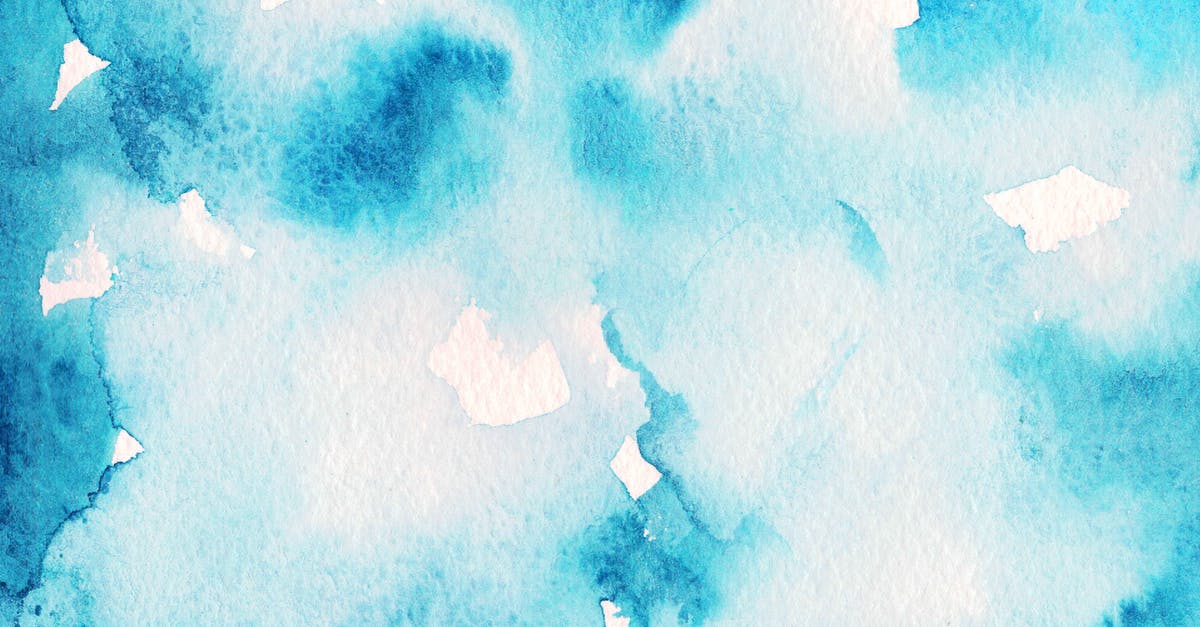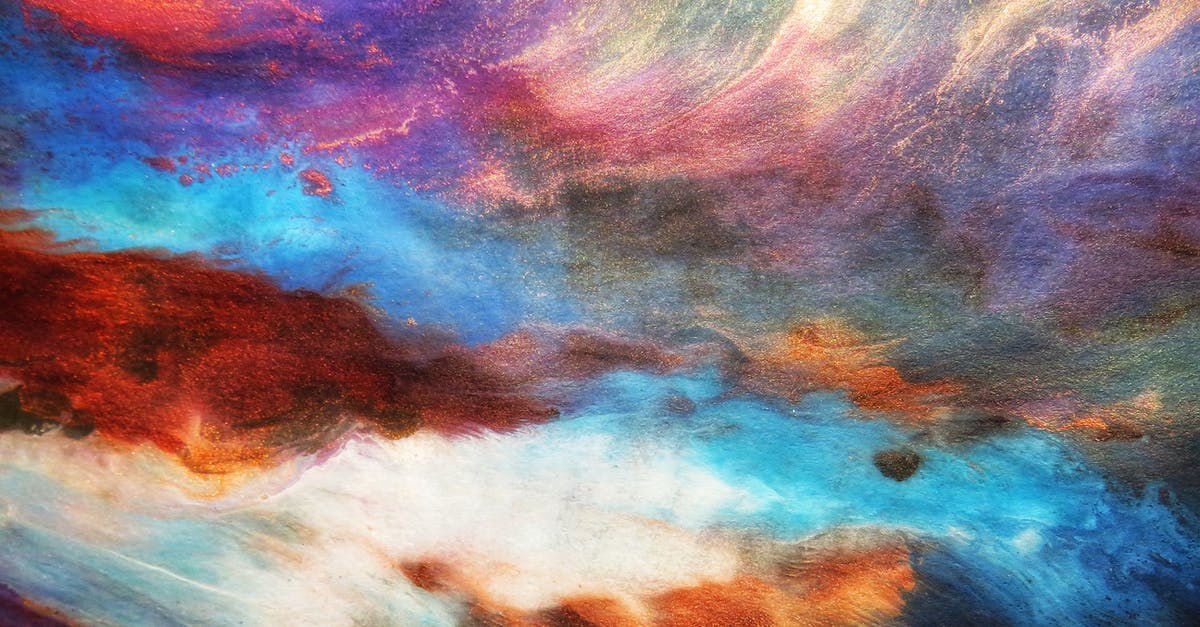What happens when you mix whiskey and water?

It is sometimes said that to best experience the flavor and aroma of a good whiskey (or whisky), one ought to add a bit of water. This practice is said to release flavors somehow.
- Is there any truth to this?
- Assuming that there is, what is going on?
Best Answer
Whisk(e)y has some crazy chemistry going on inside of it, due to the complex interactions between water, alcohols, oils, esters and other compounds of various complexity. The profile of these chemicals will vary between different whiskey/whisky styles, but the overall chemistry is similar.
Simple effects of dilution
Adding water, or serving on the rocks, has a number of simple effects, such as diluting the ethanol a bit (ethanol anesthetizes your taste buds a bit), and cooling it (making your taste buds slightly less sensitive to certain flavors), but the fascinating part is what happens to the oily flavor compounds during dilution.
Dilution masks some flavor compounds
Oily hydrocarbons are somewhat soluble in high-proof whiskey. There are long-chain esters and short-chain esters of many varieties. As you add water, the whiskey becomes more polar, and the long-chain esters become supersaturated and start to precipitate in the form of micelles, microscopic "droplets" of esters that have clumped together. In some liquors like absinthe or ouzo, these droplets can get so large that they become visible, and visibly cloud the drink (an intended feature of absinthe preparation). In whiskey, these droplets are usually microscopic and don't visibly cloud the drink, because most of the oils have been removed during chill-filtration.
However, these droplets do something important, in that short-chain esters, being more soluble in the droplet than they are in the diluted whiskey, enter the droplet and become trapped inside. These compounds are now less available for tasting or smelling. Fortunately, these compounds are the oily, grassy compounds that many people do not like in their whiskey, and masking them is considered an improvement.
Dilution releases other flavor compounds
There is another type of micelle "droplet" that forms in whiskey. Ethanol, in high concentrations in water, forms it's own clusters, as ethanol molecules gather up with one another. Interestingly, warmer solutions cause more clustering of ethanol molecules, as do higher concentrations. Like before, these micelles trap compounds that are more soluble in ethanol than they are in water, volatile flavor compounds. However, unlike the oil droplets, these flavor compounds are desirable. Cooling the solution and diluting the solution both serve to "pop" these ethanol micelles, allowing them to release their trapped compounds for aroma and flavor.
So cooling and adding water can have the effect of both masking certain flavors by forcing them out of solution, and enhancing others by promoting their release back into solution. In the end, the result of the changed flavors is a matter of taste, which is why some people prefer neat, with water, or on the rocks, but one cannot deny that real chemical changes are in play.
References
- Scientific Paper: Release of distillate flavour compounds in Scotch malt whisky
- Blog posts: New perspectives on whisky and water
- Article: Tasting Whisky
- Wikipedia: Scotch Whisky
Pictures about "What happens when you mix whiskey and water?"



Quick Answer about "What happens when you mix whiskey and water?"
Water causes new flavors to emerge from the glass, commonly referred to as “opening up” the whiskey. Hartings explains that the water isn't adding any new flavors—it's just water, after all. Nor does it alter the flavor molecules themselves. Instead, water radically rearranges the molecules inside.What happens when you add water to whisky?
Adding water frees up more of the aroma molecules to evaporate into the taster's nose. Since appreciation of flavors happens at least as much in the nose as on the tongue, \u201cwatered-down\u201d spirits actually seem more flavorful.Can you mix water and whiskey?
Try the whisky first, and if any burn feels too harsh, add a few drops of water. For a whisky bottled at 55% or higher, you may well want to add some water. Try the whisky first, and if it doesn't need any that's fine. But at these higher, often cask, strengths you may enjoy a drop of water.Is whiskey and water good?
Yield: 1 drink. It does not get much easier than this mixed drink. Really, the name says it all: it's bourbon and water. It's also often called "bourbon and branch," referring to either the stream of water that flows into your bar glass or the branch of a river near a distillery.What Will Happen if you Mix Whisky and Water?
More answers regarding what happens when you mix whiskey and water?
Answer 2
This answer is specific to scotch whisky.
In the process of making scotch whisky, distillers traditionally burn bales of dried peat moss to stop the the barley. The peat smoke produces "phenolic" compounds which give the scotch its smokey flavor. That's why smoky scotches are also called "peaty" (or have "high phenols" or "high PPM").
Phenols are highly water-soluble, moreso than some of the other chemical compounds in scotch. By adding a very small amount of water to your scotch, you can increase the volatility of some compounds while reducing the volatility of the phenols. In the process you are actually changing the chemistry (and flavor!) of the drink without diluting it. The peaty flavor will lighten up, but other flavors will become more intense.
Naturally, adding too much water just dilutes the entire profile - but a little bit of water can make a huge difference to the flavor without diminishing it at all. For a typical lowball, I would recommend using a bottled water bottlecap and pouring 1 caps-worth into your drink. Alternatively you can toss in an ice-cube and notice the flavor change as it melts, but this has (potentially negatively) cool the drink.
The effects are not the same in every scotch. I highly recommend trying as many scotches as you can get your hands on, though perhaps not all in the same night...
This article has a good read about touring a scotch plant from a chemistry student's (?) perspective.
Answer 3
- Yes, it is true. By 'a bit of water' one means 'a few drops'. Too much water is not good.
- The adding of the water starts a process that enhances the odor and makes the flavor a bit milder. It also makes the subtler flavors more noticeable, by diluting the stronger ones. If you add too much water (or ice), assuming the temperature of the water is below that of the whiskey, the coldness will inhibit the flavor.
This is a nice link (it's about whisky, but I think the same reasoning applies).
Sources: Stack Exchange - This article follows the attribution requirements of Stack Exchange and is licensed under CC BY-SA 3.0.
Images: Andrea Piacquadio, Andrea Piacquadio, Zaksheuskaya, Anni Roenkae
